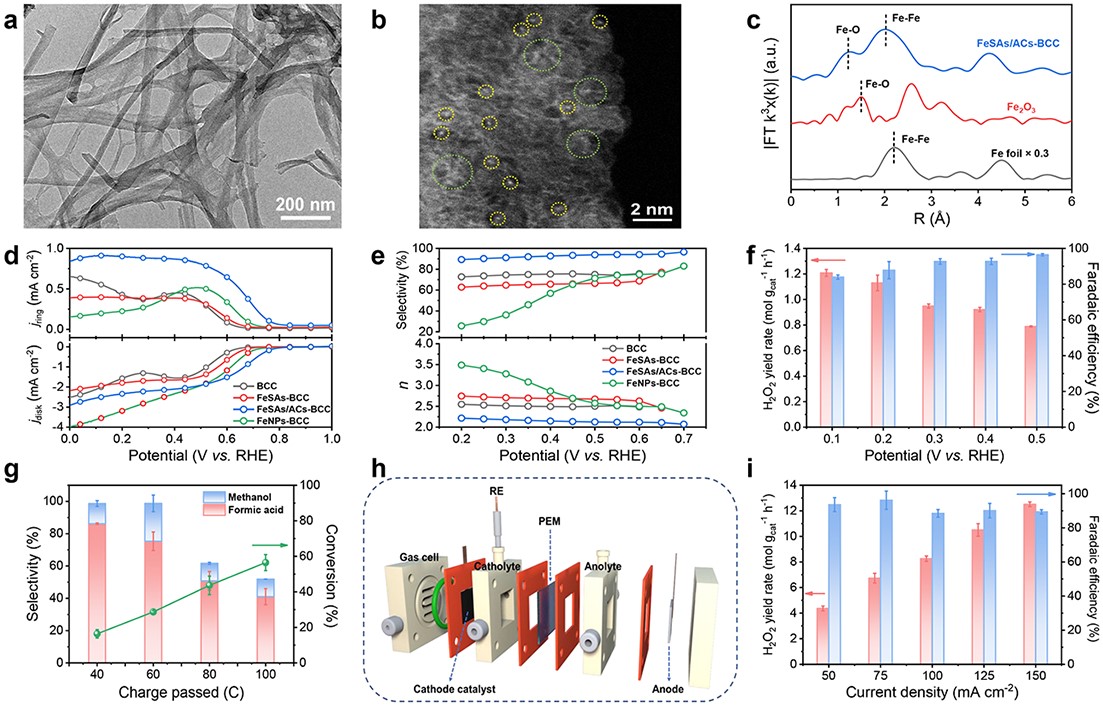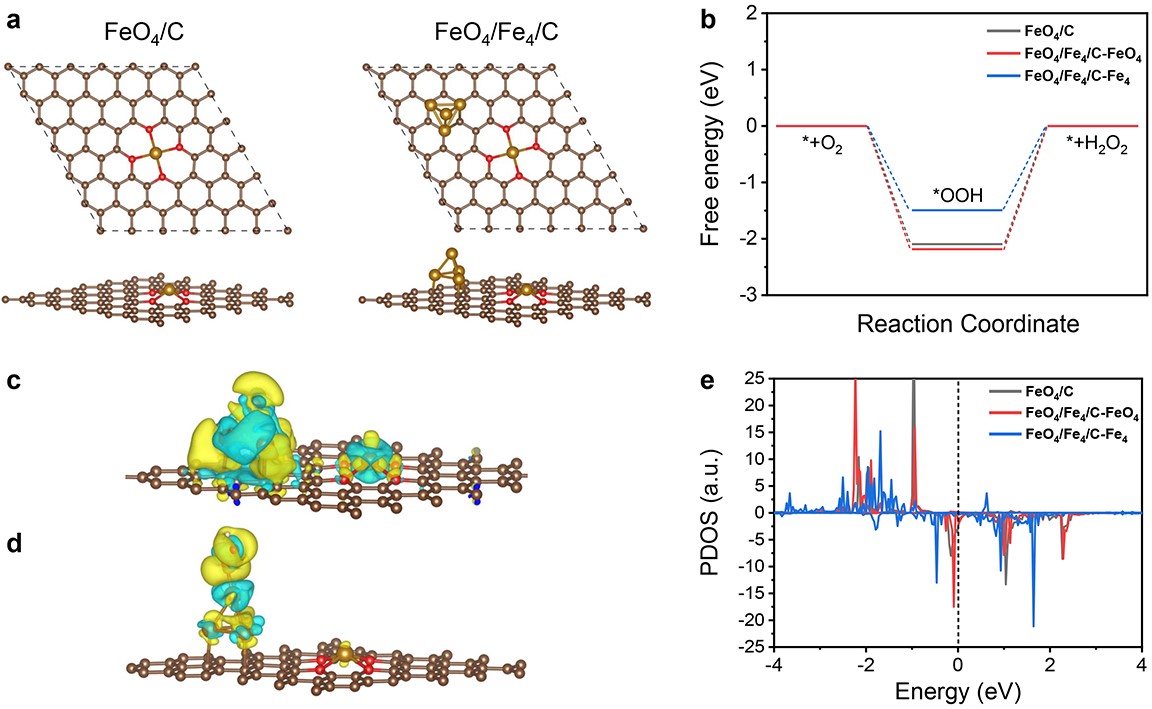
Scientists from the Hefei Institutes of Physical Science of the Chinese Academy of Sciences have synthesized an oxygen-coordinated Fe single atom and atom cluster catalyst that exhibits superior electrocatalytic performance for hydrogen peroxide (H2O2) production and biomass upgrading.
H2O2 is a widely used chemical with applications in diverse fields such as environment, energy, and healthcare. While traditionally produced through energy-intensive processes, electrocatalytic synthesis offers a more environmentally friendly and efficient method using water and oxygen. However, this approach requires advanced electrocatalysts for high-yield and selective H2O2 production, and further attention is needed to utilize the generated H2O2, particularly in electrochemical organic oxidation processes. This offers significant potential for value-added applications beyond environmental remediation.
In this study, the researchers used bacterial cellulose as an adsorption regulator and carbon source in combination with a multi-step approach involving wet chemical impregnation, pyrolysis, and acid etching processes to create a catalyst termed FeSAs/ACs-bacterial cellulose-derived carbon (BCC), consisting of oxygen-coordinated Fe single atoms (SAs) and atom clusters (ACs).
The presence of both Fe SAs and clusters was confirmed using advanced imaging techniques such as aberration-corrected scanning transmission electron microscopy. The atomic structure of Fe was also determined by X-ray fine structure absorption spectroscopy and X-ray photoelectron spectroscopy.
This catalyst showed excellent electrocatalytic performance and selectivity for the 2-electron oxygen reduction reaction (2e- ORR) under alkaline conditions. Further H-cell experiments confirmed the accumulation of H2O2 in the electrolyte.
The researchers coupled the in situ generated H2O2 with the electro-Fenton process using ethylene glycol as the reactant and acidified 0.1 M Na2SO4 as the electrolyte. This resulted in a high rate of ethylene glycol conversion and high selectivity for formic acid, demonstrating that the electro-Fenton process has the potential to improve biomass-derived feedstocks through oxidative upgrading.
They also developed a three-phase flow cell based on the gas diffusion electrode to further improve the H2O2 yield.
Density functional theory analyses indicated that the actual catalytically active sites in the 2e- ORR process were the Fe clusters, and the electronic interaction between Fe single atoms and Fe clusters could significantly enhance the electrocatalytic performance toward 2e- ORR.
This work would be helpful for the design and development of atomic-level electrocatalysts for high-efficiency 2e- ORR to H2O2 and biomass upgrading.

Characterizations, electrochemical H2O2 synthesis performance and coupled electro-Fenton process of FeSAs/ACs-BCC. (Image by XU Hui)

Theoretical calculations and mechanism elucidation toward 2e- ORR. (Image by XU Hui)

86-10-68597521 (day)
86-10-68597289 (night)

52 Sanlihe Rd., Xicheng District,
Beijing, China (100864)

